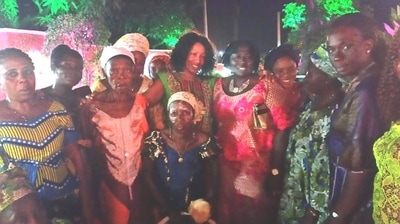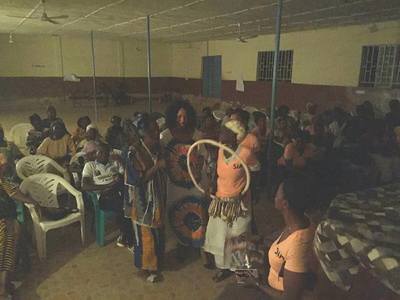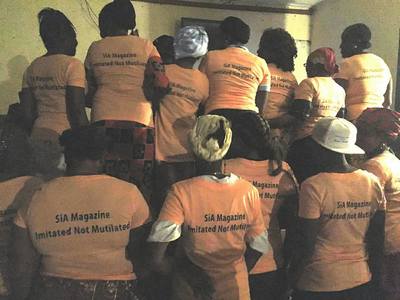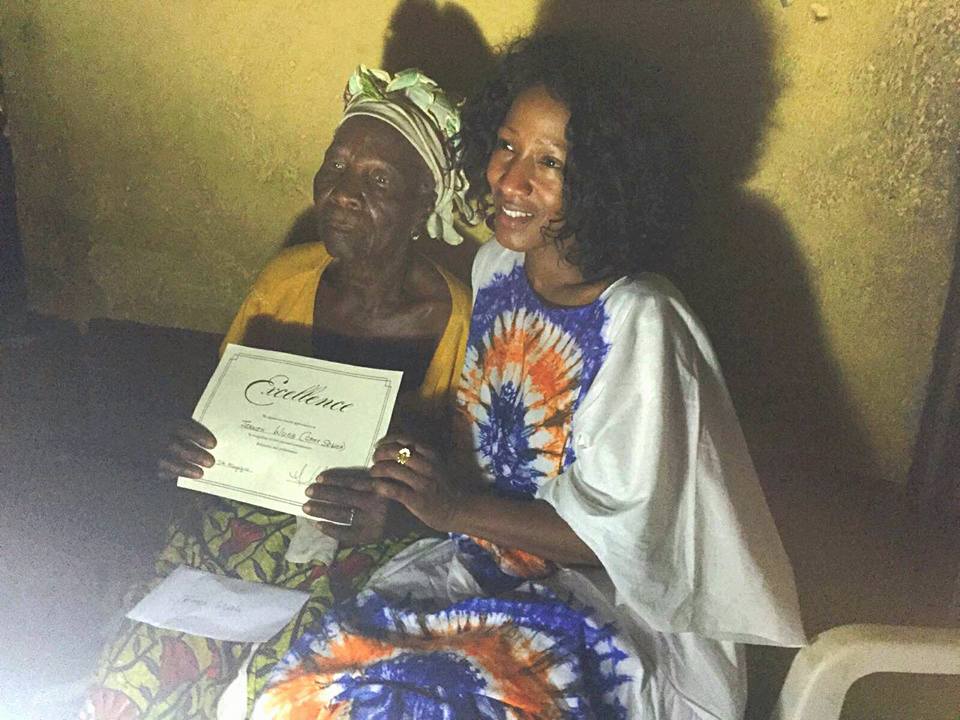|
As part of Women’s History Month, SiA Magazine took our Imitated-Not-Mutilated campaign to grassroots women in Brikama, The Gambia and Kono, Sierra Leone. In The Gambia, leaders of women's kafos welcomed me back to Brikama after nearly fifteen years since I left to complete my doctoral thesis in London. We discussed so many issues – top of the list was the departure of former President Yayah Jammeh and how relieved they felt to be able to speak freely and begin to enjoy “democracy”. On the topic of Jammehs’ Executive Order banning so-called FGM in The Gambia, the women said they had been too afraid to openly challenge the edict. They admitted that the practice has continued unabated especially up country but that women had to play down the public ceremonies and dancing of the Kankourang. I listened intently as several of the women declared one after the other that things are different now in The Gambia. They danced, clapped and sang that Jammeh is gone and there is “democracy”; they can speak openly and freely and make their voices heard. But prior to all the rejoicing, one of the ngamanos (traditional exicers) was initially fearful that my group came as spies of the Government to document who in the area was violating the FGM ban. She had insisted to us that she used to perform the surgery but that she had completely stopped after Jammeh’s decree. After several other women interjected and explained my background and mission to empower women to exercise their rights to self-determination, the ngamano seemed more at ease and started to talk about the impact of anti-FGM campaigns in driving female circumcision underground. In our various kafo meetings, local women leaders passed around copies of the special edition of SiA Magazine, which depicts before and after advertisement pictures of mostly white, western women who have undergone different forms of female genital cosmetic surgery – procedures that are far more invasive than the various traditional female circumcision practices in The Gambia. As with the women in Koidu town, the capial of Kono District, Gambians viewed the images with shock, disdain, laughter or a knowing I-am-not-surprised grumble. I explained to them that it is not just adult women who are popularizing our traditional African female circumcision practices – white adolescent girls are also seeking to improve the appearance of their vulvae through what the western media has rebranded “labiaplasty”.
The women expressed thanks, prayed for me and asked me to stay and travel around the country with SiA Magazine’s awareness campaign. All of them were excited to come on board the fight for our global rights - as women - to equality, self-determination, our religion, our cultural beliefs, bodily practices and our human dignity.
2 Comments
5/14/2017 03:09:35 pm
Great job you are doing Dr.Fuambai. Female circumcision is certainly an Islamic duty and is not genital mutilation at all. It involves removing the skin (prepuce) around the clitoris which enhances, not curbs women's sexuality. This procedure allows the clitoris to be exposed for greater stimulation since it does away with the prepuce which serves as an obstacle to sexual satisfaction. The clitoral prepuce also harbours germs such as the cancer-causing HPV. Thus female circumcision as required by Islam prevents Urinary tract Infections, AIDS and transmission of cancer-causing HPV to husbands through oral sex. :See: http://asiffhussein.com/2015/04/02/female-circumcision-the-hidden-truth/
Reply
BobbyT
3/25/2018 09:23:47 pm
Is there a simple way to distinguish the various types of "circumcision"?
Reply
Your comment will be posted after it is approved.
Leave a Reply. |
Archives
March 2024
Categories
All
|




 RSS Feed
RSS Feed